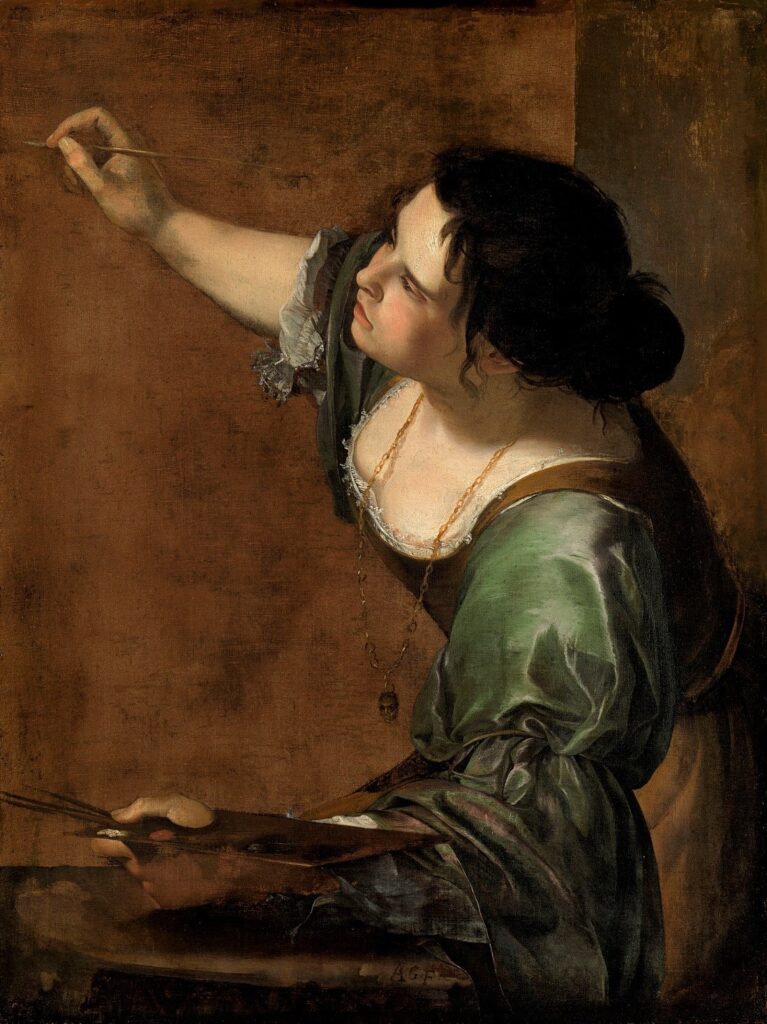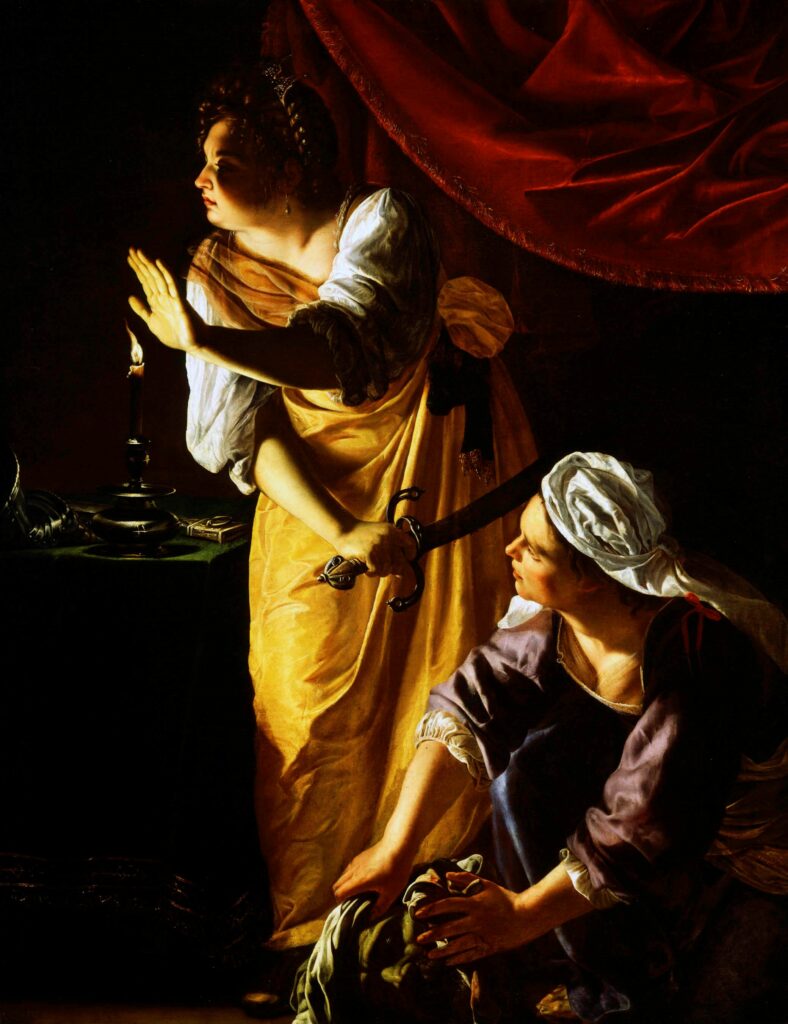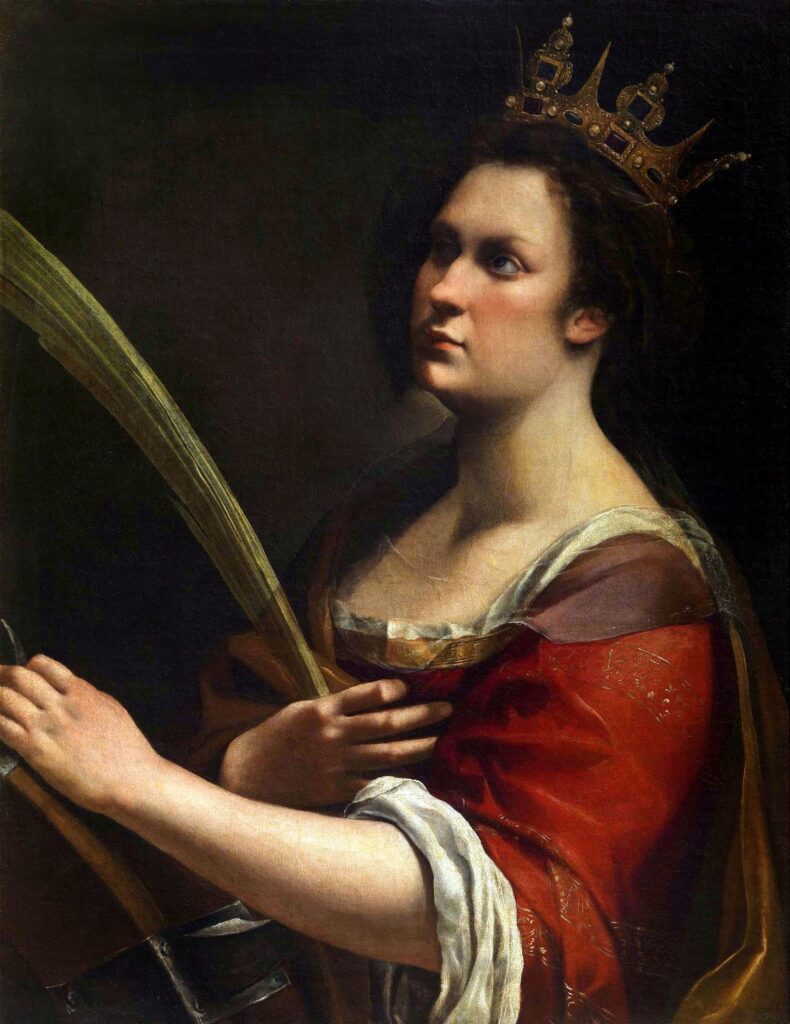Artemisia Gentileschi
Grades 9+
The year was 1611. Orazio Gentileschi and Agostino Tassi, two renowned painters, were working decorating the vaulted ceilings of the Pallavicini-Rospigliosi, a royal palace in Rome. Orazio’s 17-year old daughter, Artemisia, often present in her father’s studio, stood admiring the two men’s work. She too had a passion for painting. Her father had been teaching her. (1)
 She had begun painting with her father and, especially, with Tassi, who treated her like a valued coworker. One day in May, they were painting more of the ceiling. Realizing her father was away, with another man’s help – to hold her down – Tassi raped Artemisia. A female friend of hers stood by and did nothing.
She had begun painting with her father and, especially, with Tassi, who treated her like a valued coworker. One day in May, they were painting more of the ceiling. Realizing her father was away, with another man’s help – to hold her down – Tassi raped Artemisia. A female friend of hers stood by and did nothing.
Later, hoping he would marry her and her “shame” would not be discovered, Artemisia started an affair with Tassi. But when he refused to marry her, her father pressed charges.
 The trial that followed was long and grueling. Artemisia was forced to relive the traumatic experience of her assault and was subjected to torture. Her captors even applied thumbscrews to her to get her to change her story. Despite the unbearable pain and anguish, Artemisia refused to give up. She was determined to bring make sure that her attacker was brought to justice and that her voice was heard. In the end, her brave courage and persistence paid off, and the man who wronged her, Tassi, was convicted. (1)
The trial that followed was long and grueling. Artemisia was forced to relive the traumatic experience of her assault and was subjected to torture. Her captors even applied thumbscrews to her to get her to change her story. Despite the unbearable pain and anguish, Artemisia refused to give up. She was determined to bring make sure that her attacker was brought to justice and that her voice was heard. In the end, her brave courage and persistence paid off, and the man who wronged her, Tassi, was convicted. (1)
For Artemisia, the scars of that day would never fully heal. She sought solace in her art.
The artworld of the time was sexist. Women were allowed to paint but were never considered to be professional artists. Artemisia, however, made art history. She became the first female member to be included in the prestigious Academy of Fine Arts in Florence, Italy.
 Her groundbreaking accomplishment was a major step forward for female artists everywhere. Known for her powerful and dramatic paintings, Artemisia often depicted strong and heroic women. (1)
Her groundbreaking accomplishment was a major step forward for female artists everywhere. Known for her powerful and dramatic paintings, Artemisia often depicted strong and heroic women. (1)
One of her most famous paintings is Judith Slaying Holofernes, which depicts the biblical story of Judith, a Jewish widow who saves her people by seducing and beheading the Assyrian general, Holofernes. In the painting, Judith is shown in the act of cutting off Holofernes’ head while a maidservant helps to hold him down. The use of light and shadow in the painting creates a dramatic and intense atmosphere, emphasizing the brutality of the scene. The painting, though showing graphic violence and intense emotion, depicts a woman taking control of a dangerous situation.
Gentileschi Activity 1
Determine which adjective in the paragraphs with a parenthesis can be deleted without changing the sentence’s meaning.